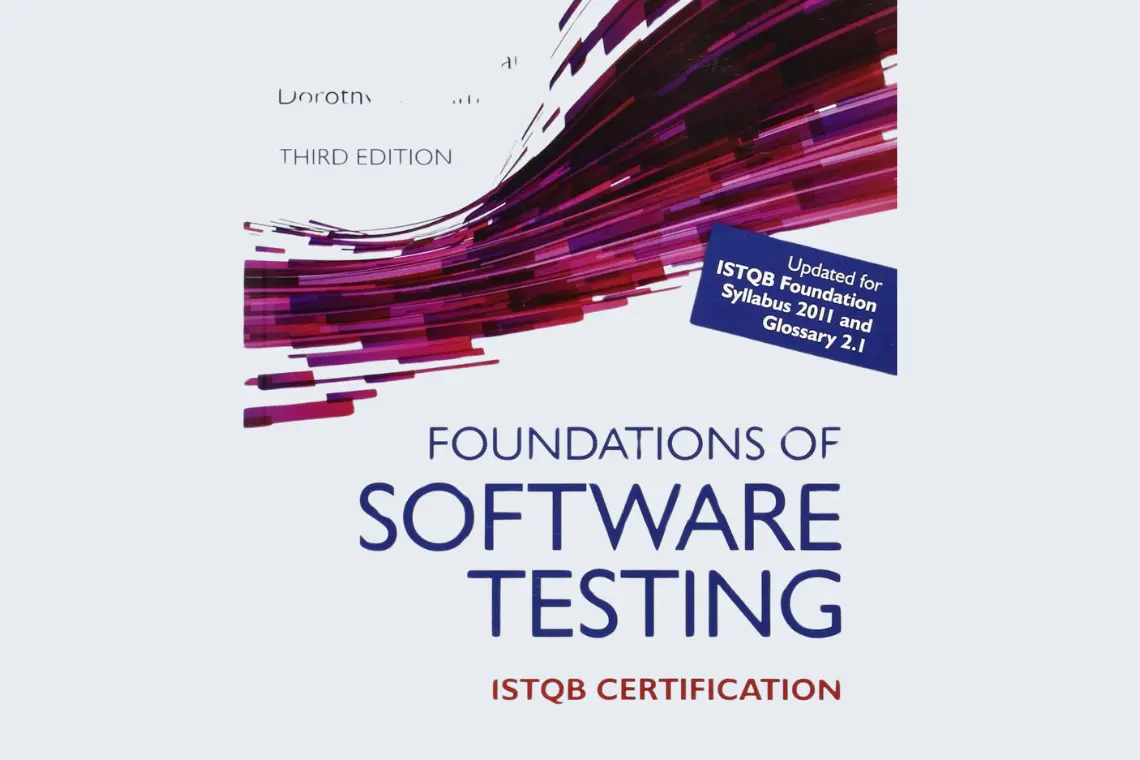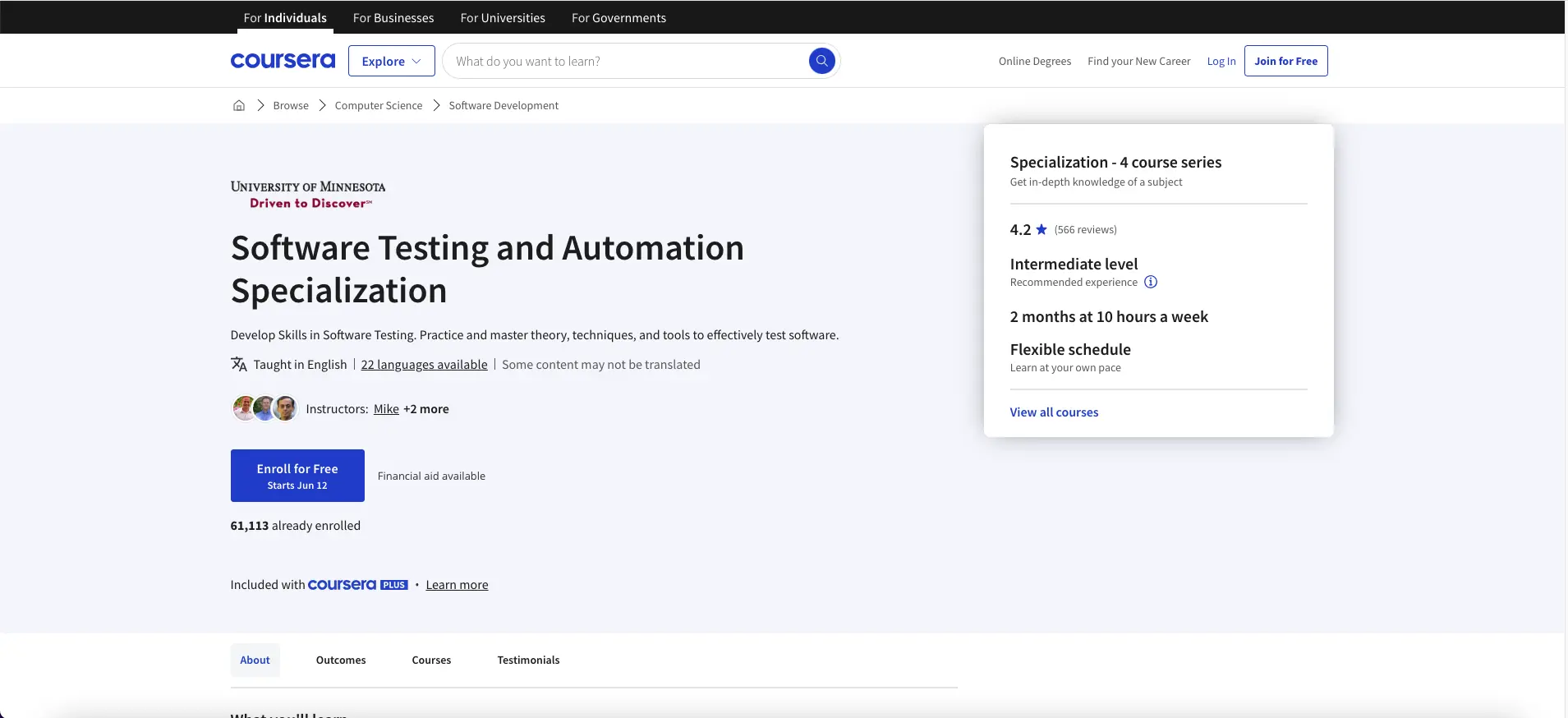Test management is critical in the software development life cycle, ensuring that software undergoes rigorous testing to meet quality standards and function as intended.
Effective test management involves various processes, including organization, planning, monitoring, control, and defect management.
In this blog post, we will examine the key components of test management and give a thorough overview based on widely accepted practices and standards in the industry.
Table of Contents
Test Organization
A well-structured test organization is the foundation of effective test management. It involves defining team members’ roles and responsibilities and ensuring their independence in testing processes.
A clear organizational structure helps streamline testing activities, enhance communication, and ensure accountability. The primary roles in a test team include:
Test Leader
Also known as the test manager or coordinator, the test leader plays a pivotal role in planning, monitoring, and controlling testing activities. Their responsibilities include:
- Coordinate with Project Manager: Work closely with project managers to align the test strategy and plan with the project objectives.
- Selecting Test Approaches: Choosing appropriate test methods and tools that align with the project’s goals and requirements.
- Estimating Time and Resources: Assessing the time, effort, and resources needed for testing activities.
- Planning Test Levels and Cycles: Defining the different levels of testing (e.g., unit, integration, system, acceptance) and scheduling test cycles accordingly.
- Test Configuration Management: Ensuring all test artifacts (test plans, test cases, test data) are version-controlled and traceable.
- Monitoring Test Results: Tracking and evaluating test results ensures that testing progresses as planned.
- Incident Management: Planning and managing the process for identifying, reporting, and resolving defects and issues.
Tester
The tester executes the testing activities defined by the test leader. Their role involves:
- Reviewing Test Plans: Contribute to and review test plans to ensure they are comprehensive and achievable.
- Analyzing Requirements: Assessing user requirements and specifications for testability.
- Creating Test Specifications: Developing detailed test cases and scripts based on the requirements and design documents.
- Setting Up the Test Environment: Preparing the test environment, often coordinating with system administrators and network management.
- Executing Tests: Running test cases, logging the outcomes, and comparing actual and expected results.
- Documenting Results: Record test results and any deviations from expected outcomes and report these findings to the test leader.
Independence in Testing
Independence in testing is crucial for ensuring objectivity and uncovering defects that may not be apparent to those closely involved in the development process. They bring a fresh perspective and are more likely to identify defects impartially.
Even we can outsource to or employ external testers who are entirely independent of the organization. They offer the highest level of objectivity but may need to become more familiar with the specific project or product.
For large, complex, or safety-critical projects, it is often best to have multiple levels of testing, with some or all levels conducted by independent testers. This layered approach helps ensure comprehensive defect detection.
Independent testers can provide unbiased assessments of the software, leading to more reliable test results and also are more likely to identify defects internal teams may overlook. So, test results from independent testers can add credibility to the software’s quality assurance process.
However, independent testers may face challenges understanding the project context, leading to potential communication issues. Hiring external testers or maintaining a separate independent testing team can be costly.
Independent testers may require additional time to understand the project and the system under test, potentially extending the testing phase.
Skills Required for Effective Testing
Skills are crucial for ensuring that testing is thorough and efficient. To perform their tasks effectively, individuals involved in testing must have a combination of technical knowledge, domain expertise, and interpersonal skills.
Application or Business Domain Skills
To spot improper behaviour, a tester must understand the intended behavior and the problem the system will solve. This includes knowledge of the business processes, user needs, and regulatory requirements relevant to the application under test.
Familiarity with the specific domain (e.g., finance, healthcare, e-commerce) helps testers to identify critical functionality and potential areas of failure more effectively.
Technology Skills
A tester must be knowledgeable about the chosen implementation technology’s issues, limitations, and capabilities to locate problems and identify likely-to-fail functions and features. This includes knowledge of programming languages, software development frameworks, databases, and networking.
Proficiency in using test tools for test management, automation, and defect tracking is essential. Testers should be comfortable with tools like JIRA, Selenium, QTP, LoadRunner, and others relevant to their testing environment.
Testing Skills
A tester must know the testing topics discussed in the ISTQB syllabus, including test design techniques, levels, and types.
Familiarity with various testing processes, such as Agile testing, DevOps, and traditional Waterfall testing, is crucial. Understanding how to apply these processes in different project contexts enhances the effectiveness of the effort.
Strong analytical skills are necessary to review and assess user requirements, specifications, and models for testability, design test cases, and identify defects.
Testers should be adept at identifying issues, diagnosing problems, and suggesting viable solutions during testing.
Professional and Social Skills
Preparing and delivering written and verbal reports is essential. Testers must communicate effectively with developers, project managers, and other stakeholders to understand the testing progress and issues clearly.
Building a positive relationship between developers and testers is critical for a collaborative work environment. Testers must work well in teams, sharing knowledge and supporting each other to achieve common goals.
By paying meticulous attention, testers identify and address even the most minor defects. This is vital for maintaining high-quality standards in software products.
Test Planning and Estimation
Test planning is a continuous activity that begins at the project’s inception and continues throughout the development lifecycle. It involves several key components:
Scope
Determining the boundaries of the testing effort. This includes determining which software features, functionalities, and components to test and which to exclude. Clearly defining the boundaries helps concentrate testing efforts on essential areas and prevents the project from expanding beyond its intended scope.
Objectives
Establish testing goals to meet the project’s quality standards and requirements. Objectives may include verifying that the software meets user requirements, identifying defects, ensuring the software is reliable and performs well under various conditions, and providing confidence that the software is ready for release.
Risk Assessment
Risk assessment is critical to test planning, as it helps identify and prioritize areas that might fail. This involves:
- Identifying Risks: Determining potential risks related to the project and the product. These can include technical risks (such as software defects), project risks (such as delays or resource shortages), and business risks (such as non-compliance with regulations).
- Prioritizing Risks: Assessing the likelihood and impact of each risk to prioritize testing efforts. Thoroughly testing high-priority risks mitigates potential failures early in the development cycle.
Test Strategy and Approach
The test strategy and approach provide an outline for conducting testing. This includes:
Test Strategy is a high-level document that describes the overall approach to testing. It includes the selection of test levels (e.g., unit, integration, system, acceptance testing), types of testing (functional, non-functional, regression), and the tools and techniques to be used.
Test Approach: Detailed plans for executing testing, including the selection of test cases, test data, test environments, and test schedules. The approach also includes decisions on manual versus automated testing and the criteria for test completion.
Resource Planning
Resource planning ensures that the resources are available for testing activities. This includes:
- Estimating Time and Effort: Calculating the time and effort required for various testing activities, such as test design, test execution, and test reporting.
- Allocating Resources: Identifying and assigning the required human resources (testers, test leads), hardware and software resources (test environments, test tools), and financial resources (budget for testing activities).
Entry Criteria in Test Management
The entry criteria must meet certain conditions before testing can begin. These criteria ensure that the testing process starts under optimal conditions, minimizing the risk of encountering preventable issues.
Availability of test environments, test data, and approved requirements documents.
Exit Criteria in Test Management
Before concluding the testing, the team must meet the exit criteria. These criteria ensure that testing has been thorough and that the software meets the required quality standards.
Achieving a certain level of test coverage, passing a predefined number of test cases, or having no critical defects.
Test Estimation
Test estimation involves predicting the effort and resources required for testing activities. Common estimation techniques include:
- Expert-Based Estimation: Using the judgment and experience of experts to estimate testing efforts.
- Analogous Estimation: Comparing the current project with similar past projects to estimate the required effort.
- Work Breakdown Structure (WBS): This involves breaking down the testing process into smaller, manageable tasks and estimating the effort required for each task.
Documentation and Communication
Stakeholders should document and communicate test plans effectively. This includes:
- Documenting Test Plans: Creating detailed test plans that outline the scope, objectives, risks, strategy, approach, resources, and criteria for both the start and end of testing. The test plan provides a blueprint for all testing activities and ensures everyone involved aligns with the testing goals.
- Communicating Plans: Sharing the test plans with stakeholders, including project managers, developers, testers, and business analysts, to ensure transparency and collaboration. Regular updates and reviews of the test plan help manage changes and keep the team informed of any adjustments needed based on new information or changing project conditions.
Factors Affecting the Test Effort
Several factors can influence the amount of effort required for testing. We can broadly categorize these factors into product factors, process factors, and the outcome of testing, as they can influence the amount of effort required for testing.
Product Factors
The clarity and completeness of the requirements and design documents. High-quality specifications reduce ambiguity and the need for extensive clarification, thus reducing the test effort.
Larger software systems with more features and components typically require more testing effort because of the increased number of test cases and scenarios.
Complex applications with intricate workflows, integrations, and dependencies demand more rigorous testing.
Aspects such as usability, performance, and security are critical and may require specialized testing to ensure they meet the required standards.
Process Factors
The chosen development method (e.g., Agile, Waterfall) affects the testing process and effort. Agile methodologies involve continuous testing and integration, requiring more frequent but smaller testing efforts.
The presence and effectiveness of test tools for automation, defect tracking, and test management can significantly affect the testing effort. Efficient tools can streamline testing activities and reduce manual effort.
The testing team’s expertise and experience influence the testing process’s efficiency and effectiveness. Skilled testers can identify defects more efficiently and create more effective test cases.
Project deadlines and time constraints can impact the extent and thoroughness of testing. In such scenarios, risk-based testing may focus on the most critical areas.
The Outcome of Testing
- Number of Defects: The number of defects found can affect the overall test effort, especially if many high-severity defects require extensive retesting and validation.
- Amount of Rework Required: The need to retest fixed defects and ensure that new changes do not introduce additional defects (regression testing) can increase the test effort.
Test Approaches and Strategies
A comprehensive test strategy and approach are crucial for effective test management. They ensure the testing process is systematic and aligned with the project goals. This section covers various test approaches and strategies commonly used in software testing.
1. Analytical Strategy
This approach involves analyzing the risks related to the software application and prioritizing testing efforts based on the identified risks. It focuses on testing the most critical application areas with the highest risk of failure and impact on the user.
- Facilitating the prioritization of testing efforts, ensuring thorough testing of critical areas, and enabling early detection of major defects.
- May require extensive upfront analysis and may miss defects in lower-risk areas.
2. Model-Based Strategy
This approach uses models to represent the desired behavior of the system under test. These models generate test cases, including state machines, decision tables, or other formal representations.
- Can automate the generation of test cases, ensure consistency and coverage, and help identify edge cases.
- Requires expertise in modeling. The initial setup can be time-consuming, and models need to be maintained as the system evolves.
3. Methodical Strategy
This strategy uses predefined checklists and standards to guide testing. It ensures that the testing process systematically tests all necessary aspects of the software.
- Provides a structured approach, is easy to implement, and ensures compliance with standards.
- Can be rigid, may not cover all scenarios, and can lead to a checkbox mentality where the focus is on completing tasks rather than finding defects.
4. Process-Oriented Strategy
Agile Testing: Integrated into the Agile development process, Agile testing involves continuous testing throughout the development lifecycle. Testers collaborate closely with developers and business analysts to ensure testing aligns with development and business goals.
- Promotes collaboration, enables early and continuous feedback, and adapts to changes quickly.
- Requires a high level of communication and coordination, and may be challenging to implement in traditional environments.
DevOps Testing: This approach integrates testing into the DevOps pipeline, ensuring continuous integration and continuous delivery (CI/CD). The DevOps pipeline runs automated tests at various stages to catch defects early.
- Ensures quick feedback, supports rapid release cycles, and improves software quality.
- Requires significant investment in automation and infrastructure, and may require organizational cultural changes.
5. Dynamic Strategy
Exploratory Testing: In this approach, testers explore the application to identify defects without predefined test cases. Testers use their intuition, experience, and application knowledge to design and execute tests on the fly.
- Can uncover unexpected defects, promote creativity, and be flexible.
- Lack of documentation can make reproducing defects challenging and rely heavily on tester skills.
Ad-Hoc Testing: Similar to exploratory testing but with even less structure, ad-hoc testing involves testing the application randomly and informally, with no planning or documentation.
- Quick to implement, requires minimal preparation.
- Lacks documentation, may miss critical defects, and is not repeatable.
6. Regression Strategy
Automated Regression Testing: This strategy involves automating the execution of regression tests to ensure that new changes do not introduce defects to the existing functionality. Automated tests are run regularly, often as part of the CI/CD pipeline.
- Saves time, ensures consistency, and enables frequent testing.
- Requires investment in automation tools and maintenance of test scripts.
Test Progress Monitoring and Control
Monitoring and controlling test progress is essential for ensuring testing activities stay on track and meet their objectives. This involves systematically collecting data, analyzing results, and taking corrective actions when necessary. Key activities in test progress monitoring and control include:
Test Progress Monitoring
The primary purpose of test progress monitoring is to provide feedback and visibility into test activities. It ensures that the testing process progresses as planned and helps identify any deviations early on, enabling the implementation of corrective actions.
Metrics Collection
Metrics are quantitative measures used to assess various aspects of the testing process. Collect these metrics manually or automatically to gain valuable insights into the status and effectiveness of testing. Key metrics include:
- Percentage of Work Done: This metric tracks the progress of test case preparation, execution, and completion. It helps assess the completed work compared to the remaining tasks.
- Test Case Execution Status: Tracks the number of test cases executed, passed, failed, blocked, or deferred. It provides a snapshot of the current testing status and helps identify bottlenecks.
- Test Coverage: Measures the extent to which the test cases cover the requirements, risks, or code. High coverage shows thorough testing.
- Defect Density: The number of defects found per unit size of the software (e.g., per thousand lines of code). It helps identify areas of the software that are more prone to defects.
- Milestone Dates: Key dates in the testing schedule include the start and end dates of the test phase and the achievement of major milestones.
- Testing Costs: Track the cost of testing activities and compare them to the benefits, such as finding and fixing defects, versus the cost of potential failures if defects are not found.
These metrics provide visibility into the testing process and help assess progress against the plan.
Test Reporting
Test reporting involves summarizing testing activities and results to give stakeholders the information they need to make informed decisions. Reports should be clear and concise and include all relevant data to support decision-making.
Components of Test Reports
- Test Execution Summary: Summarizes the test cases executed, including the number of tests run, passed, failed, blocked, and deferred.
- Defect Status: This section summarizes the defects identified during testing, including their status (open, in progress, closed), severity, priority, and any patterns or trends observed.
- Metrics Analysis: Analyzed metrics, such as test coverage, defect density, and percentage of work done to assess the adequacy of the testing process.
- Decisions and Actions: Based on the analyzed data, the report should highlight any decisions taken, such as re-prioritizing tests, adjusting schedules, or allocating additional resources.
These reports should include information on test execution, defect status, and metrics that support decision-making regarding future actions.
Test Control
Test control involves taking corrective actions based on the data collected during test progress monitoring and reporting. It ensures the testing process remains aligned with project goals and adjusts to any changes or issues.
Corrective Actions
- Re-Prioritizing Tests: When testers identify new risks or issues, they may need to adjust the priority of test cases to focus on the most critical areas.
- Adjusting Schedules: Changes in project timelines, resource availability, or test environment issues may require adjustments to the testing schedule.
- Modifying Test Environments: Ensure you set up the test environments correctly and address any issues arising during testing.
- Setting New Entry Criteria: Based on the current state of the project and any new information, adjust the criteria that need to be met before testing can begin.
- Setting New Exit Criteria: Adjust the criteria for concluding testing to ensure that testing is only completed when all necessary conditions are met, and the software meets the required quality standards.
Examples of Test Control Actions
- Deciding based on the information from test monitoring, such as continuing or halting testing, is based on progress and results.
- Re-prioritizing tests when an identified risk occurs, ensuring that the most critical tests are executed first.
- Changing the test schedule because of a test environment’s availability ensures that testing activities are not delayed.
- Set entry criteria that require developers to test (confirmation test) fixes before accepting them into a build, ensuring that the software includes only stable and tested changes.
Configuration Management in Test Management
Configuration management is a critical aspect of test management that ensures all items of the testware, such as test plans, test cases, test scripts, and test data, are identified, version controlled, and tracked for changes. This process is vital for maintaining traceability and ensuring that the correct versions of test items are used throughout the testing process.
The primary purpose of configuration management is to establish and maintain the integrity of the software and related products throughout the project and the product lifecycle. This involves managing changes systematically to maintain consistency and traceability across all testing artefacts.
Key Activities
Identification
All test items, including test cases, test scripts, test data, and test environments, must be uniquely identified. This ensures that each item can be tracked individually.
Establish baselines for test items at various stages of the testing process. A baseline is a reference point in the software development lifecycle marked by completing and formally approving one or more work products. This serves as the basis for further development and allows for comparison.
Version Control
Version each test item to track changes. This helps in understanding the evolution of the testware and ensures that testers are working with the correct versions of the items.
In complex projects, different development branches might create multiple versions of test items. Configuration management ensures an effective merging of changes from other branches without conflicts.
Tracking Changes
Implement a change control process to manage changes to test items. This involves documenting changes, reviewing them for potential effects, and approving or rejecting changes based on their significance.
Maintain a change log that records all changes made to test items, including the reason for the change, the person who made the change, and the change date. This log helps in auditing and ensures accountability.
Traceability
Use a traceability matrix to map test cases to their corresponding requirements. This ensures that test cases cover all requirements and helps identify the impact of changes in requirements on the test cases.
Perform impact analysis to understand the effect of changes in one part of the system on other parts. This is crucial for maintaining the integrity of the test items and ensuring that changes do not introduce new defects.
Tools and Procedures
Use configuration management tools such as Git, Subversion (SVN), or Mercurial to automate the version control and change tracking process. These tools provide features like versioning, branching, merging, and change logs, which help manage test items effectively.
Establish standard operating procedures (SOPs) for configuration management activities. These procedures should define the steps for identifying, versioning, and tracking changes to test items.
Benefits
Consistency
Ensures that all testers work with the same versions of test items, reducing the risk of inconsistencies and errors.
Maintains the integrity of the test environment by ensuring that all components are compatible and correctly configured.
Traceability
Provides a clear audit trail of changes to test items, making it easier to trace defects back to their source.
Helps in understanding the impact of changes on the overall testing process and in making informed decisions about testing activities.
Efficiency
Automates repetitive tasks such as versioning and change tracking, saving time and reducing the risk of human error.
Facilitates collaboration among team members by providing a centralized repository of test items and their versions.
Risk and Testing
Risk management in testing involves identifying potential project and product risks, assessing their likelihood and impact, and prioritizing them. This approach focuses testing efforts on the most critical areas that could affect the project’s success and software quality. A risk-based approach to testing helps determine the test techniques to be used, the extent of testing required, and prioritizes tests to find critical defects early.
Risk-Based Testing
Risk-based testing is a strategic approach that involves continuous risk analysis and management throughout the project lifecycle. This approach helps adapt to new risks during the project and focuses testing efforts on the high-risk areas.
Continuous Risk Analysis and Management
- Identifying Risks: Continuously identifying new risks related to the project and the product. This includes analyzing requirements, design, and implementation changes that could introduce new risks.
- Assessing Risks: Evaluating the likelihood and impact of identified risks to prioritize them effectively. This assessment helps in allocating resources and efforts to the most critical areas.
- Mitigating Risks: Implementing measures to reduce the identified risks. This could include developing additional test cases, increasing test coverage in high-risk areas, or employing specific test techniques to address the risks.
Risk-Based Test Techniques
- Prioritizing Tests: Focusing on testing the most critical areas of the software that are likely to fail and have the highest impact on the user. This approach identifies and addresses critical defects early in the testing process.
- Determining Test Extent: Deciding the extent of testing required for different application parts based on their risk levels. High-risk areas may require extensive testing, while low-risk areas may need minimal testing.
Non-Testing Activities for Risk Reduction
- Training: Providing training to designers and developers to reduce the likelihood of introducing defects.
- Process Improvements: Implementing process improvements to enhance the overall quality and reliability of the software development lifecycle.
Defect Management
Defect management is a critical process in software testing. It focuses on identifying, investigating, and resolving discrepancies between actual and expected test outcomes. Effectively managing defects involves systematically recording, tracking, and addressing them, improving the overall quality of the software. Key activities in defect management include defect reporting and defect tracking.
Defect Reporting
Defect reporting involves documenting defects with detailed information to facilitate their resolution. A well-documented defect report should include:
Clearly describe what was expected and what actually happened regarding the defect. This should provide enough detail for the developer to understand the issue without additional information.
Provide detailed, step-by-step instructions to help developers and testers reproduce and consistently observe the defect.
An explanation of the impact of the defect on the system and the user. This can include potential business or operational impacts.
Classify the defect based on its severity (how serious it is) and priority (how soon it should be fixed). The tester usually determines severity, while the project manager or product owner often sets the priority.
Example Defect Report
Title: Login button fails to respond
Description: The login button does not respond when clicked after entering valid credentials.
Steps to Reproduce:
- Navigate to the login page.
- Enter a valid username and password.
- Click the login button.
Expected Result: Redirect the user to the dashboard.
Actual Result: Clicking the login button does nothing.
Impact: Users cannot log in, blocking access to the application.
Severity: High
Priority: Critical
Defect Tracking
Defect tracking involves using tools to monitor the status and lifecycle of defects, from discovery to resolution. This process ensures prompt and systematic addressing of defects. Key aspects of defect tracking include:
- Defects typically go through several stages, including New, Open, In Progress, Resolved, and Closed. Each stage represents a step in the process of managing the defect.
- To automate and manage the defect lifecycle, use defect tracking tools such as JIRA, Bugzilla, or Redmine. These tools provide functionalities for logging defects, assigning them to developers, tracking their status, and generating reports.
- Collect and analyze metrics related to defects, such as defect density (the number of defects per unit size of the software), defect discovery rate, and defect resolution time. These metrics help monitor the system’s quality and the efficiency of the defect management process.
Example Defect Lifecycle
- New: Report and log the defect into the tracking system.
- Open: The test lead or project manager reviews and confirms the defect.
- In Progress: Assign the defect to a developer for fixing.
- Resolved: The developer fixes the defect and marks it as resolved.
- Closed: The tester verifies the fix and closes the defect if it no longer exists.
Benefits of Defect Tracking
- Visibility: Provides clear visibility into the status and progress of defect resolution.
- Accountability: Ensures that the responsible team members assign and address defects.
- Traceability: Maintains a record of all defects, their status, and their history, which is useful for audits and process improvements.
- Efficiency: Prioritize and manage the workload to ensure addressing critical defects first.
Final Thoughts on Test Management
Effective test management is a multifaceted process that requires meticulous planning, continuous monitoring, and proactive risk management.
Organizations can ensure their software meets the highest quality standards and fulfills user expectations by taking several key steps. First, organize the test team effectively.
Next, define clear test plans. Consistently monitor progress and manage configurations. Additionally, address risks proactively and handle defects systematically. Organizations can achieve high-quality software and meet user expectations by following these practices.
Adopting best practices in test management improves the testing process and contributes significantly to the overall success of software development projects.
🚀 Before You Go:
- 👏 Found this guide helpful? Give it a like!
- 💬 Got thoughts? Share your insights!
- 📤 Know someone who needs this? Share the post!
- 🌟 Your support keeps us going!
💻 Level up with the latest tech trends, tutorials, and tips - Straight to your inbox – no fluff, just value!





















I am impressed with this website , rattling I am a big fan .